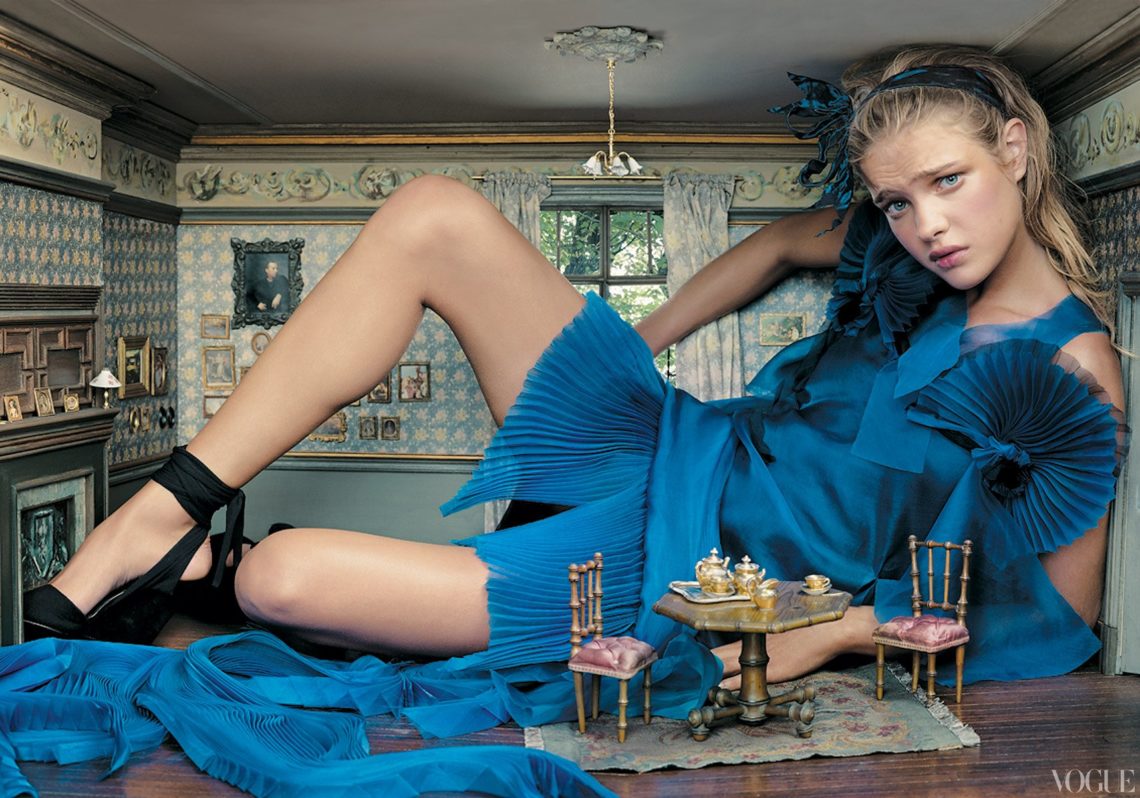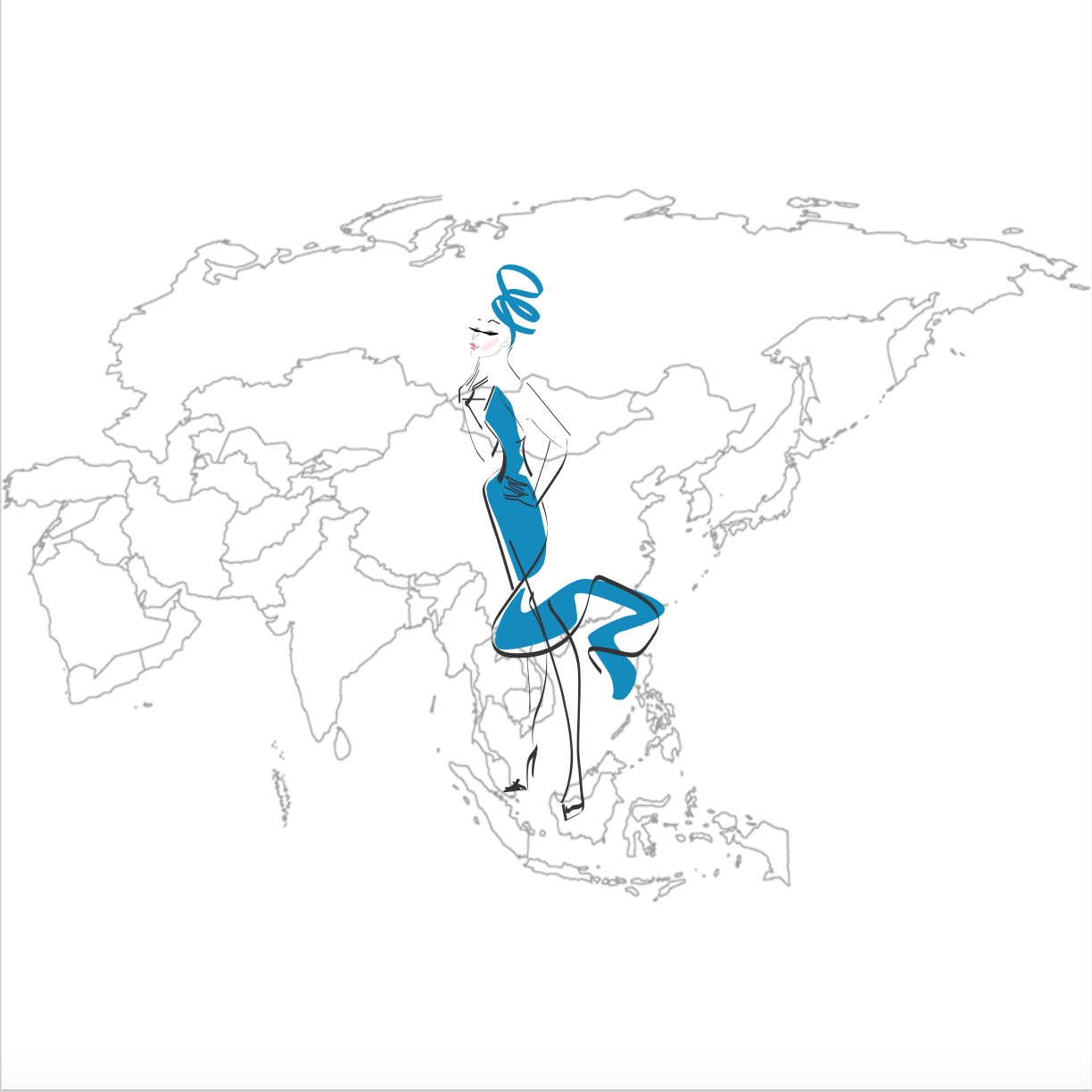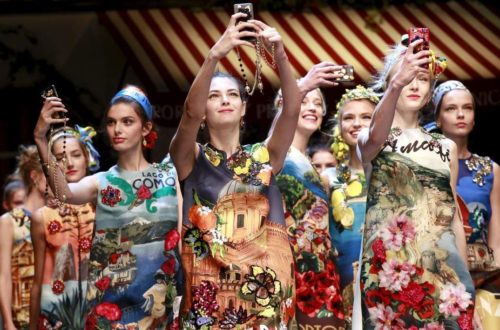Storytelling about evolving lifestyles. This is the essence of fashion photography. From a more practical point of view, it is a mean to show and describe what is going to be offered to public, to persuade people to desire it, to make us fall irremediably in love with the Zeitgeist. Due to the fluctuation of people tastes and the happenings influencing society, fashion photography has to keep itself up-to-date. How is it possible? Thanks to its Bards.

The strength and effectiveness of a fashion image is due to the ability of the one who stands behind the camera and the editor supporting him/her, whose mantra is: “everything or anything for the picture”, as Vera Wang stated in the documentary “The Editors eye”. Such an ability derives from an innate capability of watching the World in a different way, of capturing in a sight details ad shadows irrelevant or even unseen by others. In a second’s fraction, the imperceptible movement of a finger, a glimpse or even an involuntary movement, can lead to an impressive photograph, characterising the the imagery of an entire generation.
The very first pictures dealing with fashion are dated 1856, when Adolphe Braun realized a photo book for Virginia Oldoini, noblewoman at the Napoleon III’s court. Due to the distrust of couturiers with respect to photographers due to the former fear of losing the exclusiveness of their creations, when the first fashion magazines – Harper’s Bazaar (1867) and Vogue (1892)- took off, they published images and drawings by illustrators. We can say that the true year of birth of fashion photography was 1911, when Edward Steichen took pictures of 13 Poiret’s dresses for an article to be published in the Art et Decoration magazine. But the first who can be named fashion photographer came two years after. He was Adolph de Meyer, hired by Condé Nast to shoot some experimental photos for Vogue.
It was at the beginning of the twentieth century that the association between fashion magazines and pictures affirmed itself. In the ‘30s, photographers such as Man Ray and Cecil Beaton developed such a practice.
Many others followed, but in a period of World Wars the focus was mainly on human sufferance in an austere environment. It is sufficient to remind the brave photo shoot by Lee Miller published in the early ‘40s Vogue America issue, denoting a turning point for such a magazine.

With the end of the World conflicts, the New Look by Christian Dior allowed fashion photography to blossom again. Many were the storytellers whose influence was remarkable. Among them, Richard Avedon and Irving Penn, the two artists embodying the essence of the fashion photographer. Avedon characterized himself for his passion for portraiture, through which he wanted to capture the magic springing on a face in an instant, and for his moving photos, snapped in the streets and in clubs. On the other hand, Irving Penn was well known for his rigid composition, for his use of lights and dark contrasts and for the clarity, that made his photos unique. The poses of his subjects were always studied accurately, and thanks to the use he was used to do of the backgrounds, he was able to isolate his stars from the real world, emphasizing his/her peculiarities and the the garments worn. His style was classic, glamourous but simple, surly influenced by graphics.
In addition to them, there was another photographer that allowed fashion shoots to enter the Olympus of Art: Helmut Newton. He was a real storyteller, whose stories had to be read at the first glance. Before taking a photo, he studied it in every single detail. As Polly Mellen – stylist and fashion editor at Harper’s Bazaar and Vogue for more than 60 years – highlighted telling about him, “When you talk with somebody like Helmut Newton […], he takes it further”. What he wondered was: “What is the story here?” His photos were so real, communicative, ironic and sensual, representative of the men’s imagery when dealing with women.

Many others were the Bards that, during the last seventy years, have left a sign in the fashion history of image, such as Norman Parkinson, Gian Paolo Barbieri, Bert Stern, Clifford Coffin, Guy Bourdin, David Bailey, Alfa Castaldi, Arthur Elgort, Peter Lindbergh, Eve Arnold, Deborah Turbeville, Sarah Moon, Michael Comte, Steven Meisel, Patrick Demarchelier, Tim Walker, David LaChapelle, Craig Mcdean and, last but not least, Miles Aldridge. The latter, in particular, tells not only about fashion issues, but also about social ones. His photos embodied surreal, fashion and luxury features, and are characterized by bright and striking colors. What is remarkable in his style are his destabilizing contrasts: in luxurious, fashionable and perfect environments, expressionless faces staring into space and disquieting scenes clash.
In the end, this is what fashion photography allows us to observe: the current times and the lifestyle perception of people with a highly developed personal perspective. This is why, as Polly Mallen said, editors are so keen on “bring back the pictures that make the difference”, to let us debate, to let us watch them and see the current times in a different way, to let us fall in love with the current way of living or to make us admire its beauty while realizing the contradictions of modern society. That is, fashion photography is storytelling about a fairy tale having society metamorphosis as main character, showing scenes by unusual perspectives.
by Laura Gaudioso







One Comment
brunettefromwallstreet
Reblogged this on Brunette from Wall Street.